Valentin T. Bickel
ETH Zurich
Using Machine Learning to Reduce Observational Biases When Detecting New Impacts on Mars
Jul 12, 2022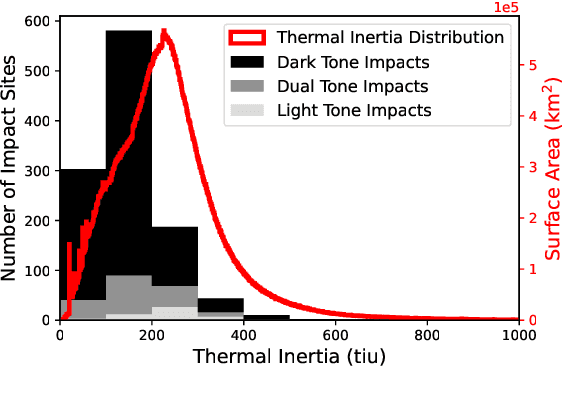
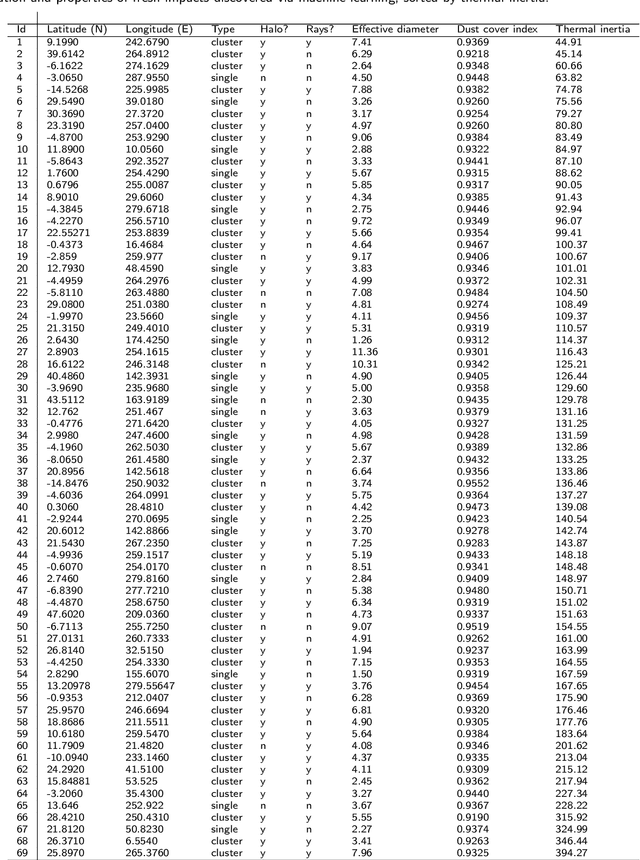
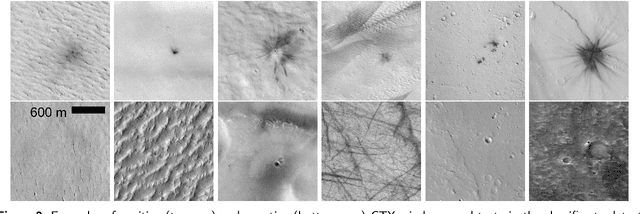
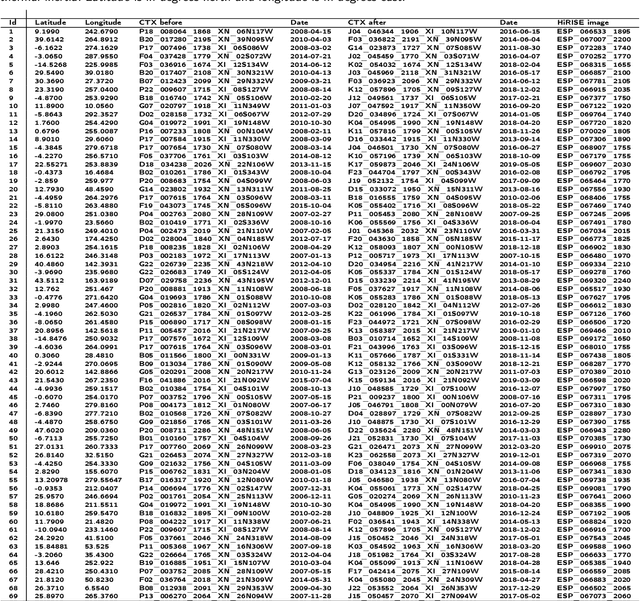
Abstract:The current inventory of recent (fresh) impacts on Mars shows a strong bias towards areas of low thermal inertia. These areas are generally visually bright, and impacts create dark scours and rays that make them easier to detect. It is expected that impacts occur at a similar rate in areas of higher thermal inertia, but those impacts are under-detected. This study investigates the use of a trained machine learning classifier to increase the detection of fresh impacts on Mars using CTX data. This approach discovered 69 new fresh impacts that have been confirmed with follow-up HiRISE images. We found that examining candidates partitioned by thermal inertia (TI) values, which is only possible due to the large number of machine learning candidates, helps reduce the observational bias and increase the number of known high-TI impacts.
* 17 pages, 10 figures, 2 tables (Author's preprint, accepted version)
Unsupervised Distribution Learning for Lunar Surface Anomaly Detection
Jan 14, 2020

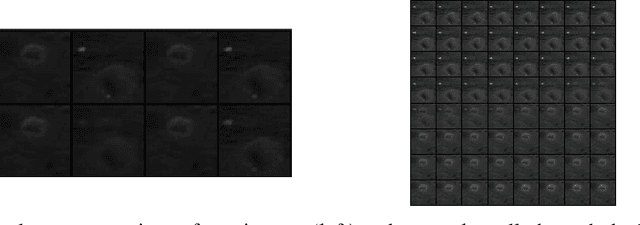
Abstract:In this work we show that modern data-driven machine learning techniques can be successfully applied on lunar surface remote sensing data to learn, in an unsupervised way, sufficiently good representations of the data distribution to enable lunar technosignature and anomaly detection. In particular we train an unsupervised distribution learning neural network model to find the Apollo 15 landing module in a testing dataset, with no dataset specific model or hyperparameter tuning. Sufficiently good unsupervised data density estimation has the promise of enabling myriad useful downstream tasks, including locating lunar resources for future space flight and colonization, finding new impact craters or lunar surface reshaping, and algorithmically deciding the importance of unlabeled samples to send back from power- and bandwidth-constrained missions. We show in this work that such unsupervised learning can be successfully done in the lunar remote sensing and space science contexts.
 Add to Chrome
Add to Chrome Add to Firefox
Add to Firefox Add to Edge
Add to Edge